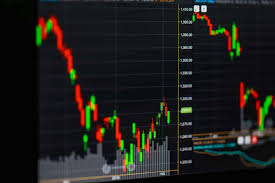
The Ultimate Guide to Forex Trading: Strategies, Tools, and Tips for Success
Forex trading, or foreign exchange trading, has become one of the most popular forms of investment worldwide. With a daily trading volume exceeding $6 trillion, the forex market is the largest and most liquid financial market. For traders looking to engage in forex trading, understanding the strategies, tools, and nuances of the market is imperative. In this guide, we will delve into various aspects of forex trading, including expert strategies, available tools, and essential tips for successful trading. Moreover, for those interested in specific regions, we’ll touch upon forex and trading Forex Brokers in Cambodia.
Understanding Forex Trading
Forex trading involves the buying and selling of currency pairs. Unlike stock trading, which happens on a centralized exchange, forex trading occurs over-the-counter (OTC), allowing for flexibility in trading hours. Currency pairs are categorized into three main types: major, minor, and exotic. Major pairs feature the most traded currencies, such as EUR/USD and USD/JPY, while minor pairs include less liquid currencies. Finally, exotic pairs combine a major currency with a currency from a developing economy.
Popular Trading Strategies
Successful forex trading requires sound strategies. Here are some of the popular trading strategies employed by traders worldwide:
1. Scalping
Scalping is a short-term trading strategy that involves making numerous trades throughout the day, aiming to “scalp” small profits on minor price changes. Scalpers require a reliable broker that offers tight spreads and low latency execution.
2. Day Trading
Day trading involves opening and closing positions within the same trading day, avoiding overnight risk. Day traders must stay updated on market news and trends, as they aim to capitalize on daily fluctuations.
3. Swing Trading
In contrast to day trading, swing trading focuses on holding positions for several days to capture more significant price movements. This strategy requires patience and the ability to analyze market trends effectively.
4. Position Trading
Position trading is a long-term strategy where traders hold positions for weeks, months, or even years, relying on fundamental analyses and long-term trends. This approach demands a comprehensive understanding of economic indicators and geopolitical events.
Key Tools for Forex Trading
Traders often rely on various tools to enhance their trading performance. Here are some essential tools utilized in forex trading:
1. Trading Platforms
A robust trading platform is crucial for executing trades effectively. Popular platforms like MetaTrader 4 (MT4) and MetaTrader 5 (MT5) provide advanced charts, indicators, and automated trading systems.
2. Economic Calendars
Economic calendars provide insight into upcoming economic events that can influence currency prices. Traders should keep an eye on major announcements, such as interest rate decisions, employment reports, and GDP data.
3. Technical Indicators
Technical indicators, such as Moving Averages, Relative Strength Index (RSI), and Bollinger Bands, offer valuable insights into market trends and potential entry or exit points.
4. Trading Journals
Maintaining a trading journal helps traders track their trades, analyze their strategies, and learn from their successes and mistakes. A well-kept journal enhances self-discipline and can lead to better trading decisions.
Risk Management Techniques
Despite potential profits, forex trading involves significant risks. Effective risk management techniques are vital for protecting capital and minimizing losses. Here are some key strategies:
1. Stop-Loss Orders
Using stop-loss orders helps traders limit potential losses by automatically closing positions at predetermined price levels. This strategy prevents emotional decision-making during market fluctuations.
2. Position Sizing
Position sizing determines the amount of capital to risk on a single trade. Traders should calculate their risk tolerance and the potential impact of each trade on their overall account balance.
3. Diversification
Diversifying a trading portfolio across various currency pairs can help mitigate risks associated with adverse market movements. This strategy enables traders to balance their exposure to different markets.
Choosing a Forex Broker
The choice of a forex broker significantly impacts trading success. When selecting a broker, consider the following factors:
1. Regulation
Ensure the broker is regulated by reputable authorities, such as the Financial Conduct Authority (FCA) or the Commodity Futures Trading Commission (CFTC). Regulation provides a layer of security for traders.
2. Spread and Commission
Analyze the broker’s spreads and commissions, as these can affect profitability. Brokers offering tight spreads are generally more favorable, particularly for scalping strategies.
3. Customer Support
Reliable customer support is crucial, especially for new traders who may encounter challenges. Choose a broker with responsive support and educational resources to assist in your trading journey.
4. Trading Conditions
Examine the trading conditions provided by the broker, including leverage options, account types, and access to various trading instruments. Choosing a broker with favorable conditions can enhance trading opportunities.
Conclusion
Forex trading offers exciting opportunities for those willing to invest time and effort to learn the complexities of the market. By understanding various trading strategies, utilizing the right tools, implementing effective risk management, and choosing a reputable broker, traders can position themselves for long-term success. Remember, continuous learning and adaptation are key components of becoming a successful forex trader in this ever-evolving market.

Comentários